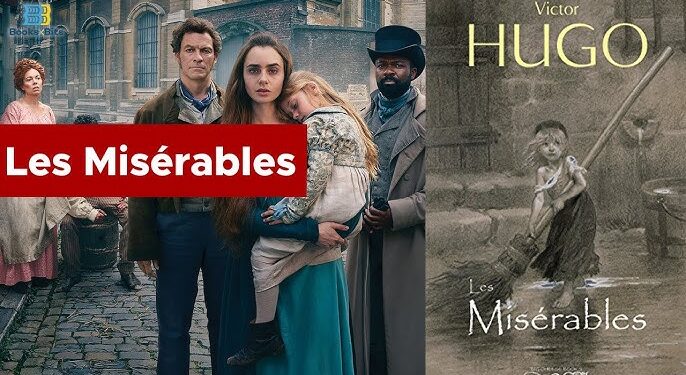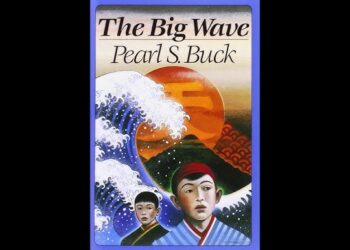Introduction
Les Misérables Novel Summary By Victor Hugo is one of the most important novels of the 19th century, a sweeping epic that explores themes of justice, love, sacrifice, redemption, and the struggle for social equality. It is set in post-revolutionary France and follows the lives of several interconnected characters as they navigate the tumultuous social, political, and moral landscapes of their time.
The novel is best known for its focus on Jean Valjean, a former convict, and his attempts to redeem himself after serving a prison sentence for stealing bread. However, the story also includes an array of complex characters, including Fantine, Cosette, Marius, Javert, and the revolutionary students. It is a story of great suffering, but also of hope, resilience, and the capacity for transformation.Les Misérables Novel Summary By Victor Hugo
Les Misérables Novel Summary
Part 1: Jean Valjean’s Transformation
The novel begins in 1815 with Jean Valjean, a former convict who has spent 19 years in prison for stealing a loaf of bread to feed his sister’s starving children. Valjean’s harsh sentence exemplifies the cruel penal system of France during that period. Upon release, Valjean is shunned by society due to his criminal record. He is turned away from multiple inns and even faces a hostile world of injustice.
However, his life changes when he encounters Bishop Myriel, a kind and compassionate clergyman, who offers him shelter and food. Valjean, moved by the Bishop’s generosity, steals silverware from the Bishop’s home, but he is caught and brought back to the Bishop. In an act of mercy, Bishop Myriel tells the authorities that the silverware was a gift and forgives Valjean, urging him to use the opportunity to become a better man. This pivotal moment marks the beginning of Valjean’s moral and spiritual transformation. He vows to change his ways and live a life of kindness and generosity.
Read More
Part 2: The Rise of Jean Valjean
Valjean adopts a new identity, changing his name to Monsieur Madeleine. He moves to the town of Montreuil-sur-Mer, where he becomes a successful businessman and mayor. He works to improve the lives of the town’s workers, providing jobs and establishing a factory for women. Valjean’s reputation as a philanthropist and a benevolent leader spreads, and he becomes a beloved figure in the town.
Meanwhile, the novel introduces Fantine, a poor woman who works at Valjean’s factory. She is forced to sell her hair and teeth to pay for the care of her young daughter, Cosette, who lives with the cruel Innkeepers, Thénardier and his wife, in the town of Montfermeil. Fantine’s life unravels as she falls ill and loses her job. Desperate, she turns to prostitution to earn money, but her health deteriorates rapidly.
When Valjean learns of Fantine’s plight, he takes responsibility for her daughter, Cosette, and promises to care for her. He pays off the Thénardiers, but they continue to extort him, even as they neglect and abuse Cosette. Valjean rescues Cosette and takes her to Paris, where they begin a new life together.

Part 3: Javert’s Pursuit
As Valjean and Cosette start a new life, the novel shifts to Inspector Javert, a relentless police officer who is dedicated to upholding the law at any cost. Javert is a symbol of unyielding justice and order, and he is determined to capture Valjean, whom he believes is a fugitive from the law. Despite Valjean’s transformation and good deeds, Javert sees him as a criminal who must be punished.
Javert relentlessly pursues Valjean across the countryside, while Valjean, who fears being sent back to prison, tries to stay one step ahead. Eventually, Valjean is able to escape Javert’s clutches multiple times, but Javert’s obsession with justice leads him to continually track Valjean down.
Part 4: The Revolutionaries and Marius
The story shifts to Marius Pontmercy, a young law student who is involved in revolutionary politics. Marius is the grandson of a royalist, but he has become sympathetic to the revolutionary cause, largely influenced by his love for Cosette, whom he has fallen in love with after seeing her in a garden. Marius’s passion for Cosette is matched by his dedication to the ideals of liberty, equality, and fraternity, which he inherits from his late father, a soldier who fought for Napoleon.Les Misérables Novel Summary By Victor Hugo
Marius becomes involved with a group of student revolutionaries, including Enjolras, the passionate leader of the group. They begin to organize an uprising against the French monarchy, which culminates in the June Rebellion of 1832. Marius is torn between his love for Cosette and his commitment to the revolutionary cause.Les Misérables Novel Summary By Victor Hugo
Part 5: The Battle of the Barricades
The June Rebellion provides the backdrop for one of the novel’s most intense and dramatic episodes. Marius and his friends build barricades in the streets of Paris to fight against the government forces. Valjean, having learned of Marius’s involvement in the revolution, sneaks into the barricades to protect him, even though he does not fully support the revolutionaries.
During the battle, many of the revolutionaries are killed, including Gavroche, a brave and resourceful street urchin who fights alongside the rebels. Valjean, who has been fighting to protect Marius, eventually carries him to safety. Valjean’s courage and selflessness in saving Marius are critical moments in his ongoing journey of redemption.
Part 6: Javert’s Moral Dilemma and Death
After the battle, Valjean is forced to flee once again, but this time, he is seriously injured. Javert, still determined to arrest him, captures Valjean, but then experiences an intense moral crisis. Javert cannot reconcile the man he has chased with the selfless act of saving a revolutionary who was fighting against the government. His rigid sense of justice and duty collapses, and he is consumed with guilt and confusion. Unable to live with the contradiction, Javert commits suicide by drowning himself in the Seine River.
Read More
Part 7: The Resolution
Marius and Cosette, who are now in love, prepare to marry. However, Valjean feels that he cannot remain in their lives, as his past still haunts him. He decides to reveal his true identity to Marius before the wedding, fearing that his criminal record will ruin their future happiness. Marius, initially shocked and repelled by the truth about Valjean’s past, comes to understand the depth of Valjean’s sacrifice for Cosette and agrees to keep the secret from Cosette.
Valjean’s health begins to decline, and he finally dies peacefully, content in the knowledge that Cosette will be cared for by Marius. Before his death, Valjean is visited by Bishop Myriel, who assures him that he has redeemed his soul through his acts of kindness and love.
In the final pages of the novel, Valjean is buried, and the story ends with a sense of both sadness and hope, as Cosette and Marius continue their life together, honoring the memory of the man who saved them both.Les Misérables Novel Summary By Victor Hugo

Themes in Les Misérables
- Redemption and Transformation
The central theme of Les Misérables is the possibility of redemption. Valjean’s journey from hardened criminal to compassionate benefactor demonstrates the transformative power of love, kindness, and forgiveness.Les Misérables Novel Summary By Victor Hugo - Social Justice and Class Inequality
The novel critiques the social and economic inequalities of 19th-century France. Through characters like Fantine, the Thénardiers, and Valjean, Hugo exposes the cruelty and injustice of the social system and advocates for a more compassionate and just society. - The Power of Love
Love in its many forms—parental love, romantic love, and self-sacrificial love—is a driving force throughout the novel. Valjean’s love for Cosette, Fantine’s love for her daughter, and Marius’s love for Cosette all serve as catalysts for the characters’ actions and moral growth.Les Misérables Novel Summary By Victor Hugo - Justice vs. Law
Through the character of Javert, Hugo explores the tension between the law and true justice. While Javert represents the strict adherence to the law, Valjean embodies the idea of moral justice, which sometimes requires mercy and compassion.
Read More
- The Struggle for Liberty and Equality
The novel also touches on the political climate of France during the post-revolutionary period. The revolutionary students, led by Marius and Enjolras, fight for liberty and equality, which reflect the broader ideals of the French Revolution.
(FAQ)
1. What does Les Misérables say about the nature of justice?
The novel contrasts legal justice with moral justice. Through characters like Javert and Valjean, Hugo suggests that legal systems, while important, do not always serve true justice, which requires compassion, forgiveness, and understanding of human suffering.
2. Why does Valjean choose to reveal his identity to Marius?
Valjean reveals his past to Marius because he feels that Cosette deserves to marry a man who can live without the shadow of a criminal past. His decision reflects his deep love for Cosette and his desire for her to have a life free of stigma.
3. Is Valjean’s redemption complete by the end of the novel?
Yes, Valjean achieves full redemption by the end of the novel. His transformation from a bitter, vengeful man to a self-sacrificing, compassionate one demonstrates the novel’s belief in the power of forgiveness, love, and personal change.
4. How does Les Misérables critique society?
The novel critiques the social, economic, and political systems that create injustice and inequality. Through characters like Fantine and Valjean, Hugo exposes how the poor and powerless are often mistreated by both the legal system and society at large.
5. What role does Bishop Myriel play in Valjean’s transformation?
Bishop Myriel is a pivotal figure in Valjean’s redemption. His act of mercy when he forgives Valjean for stealing silverware and his guidance inspire Valjean to change his ways. The bishop’s kindness is the catalyst for Valjean’s moral and spiritual rebirth.Les Misérables Novel Summary By Victor Hugogf
Read More

















